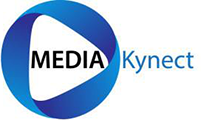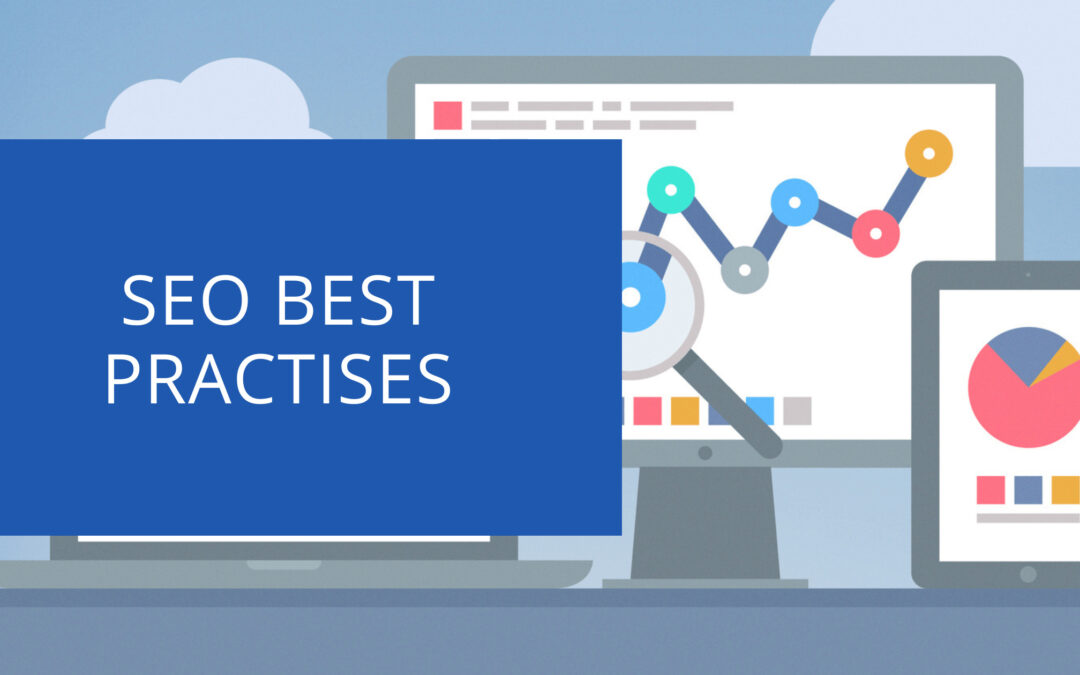Search engine optimisation is a difficult process, and many nuances can make or break your SEO strategy. In this article we will discuss the best practices for performing SEO on your website – from keyword selection to site structure and content formatting.
Contents
14 SEO Best Practises
Keyword research
Keyword research is the process of identifying and targeting the keywords that your potential customers are likely to use when they search for information relevant to your business.
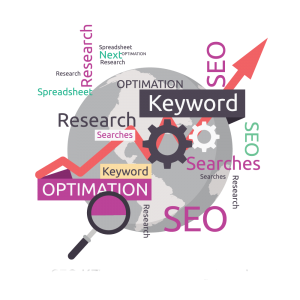 By understanding which keywords people are using to find information related to your products or services, you can create a targeted SEO strategy that will help you reach more potential customers.
By understanding which keywords people are using to find information related to your products or services, you can create a targeted SEO strategy that will help you reach more potential customers.
Here are some tips:
- Start by brainstorming keywords related to your business
- Use keyword research tools to identify popular keywords
- Target long-tail keywords to reach more potential customers
- Conduct competitor analysis to find profitable keywords
- Use keyword data to create content that resonates with your audience
Onpage optimisation
Onpage optimisation is the process of optimising your website’s content, structure and markup to improve its rankings in search engine results pages (SERPs). By improving your website’s onpage SEO, you can improve its visibility and organic search traffic.
Onpage factors that can be optimised include:
- Page titles
- Meta descriptions
- Headings and subheadings
- Image alt text
- Content length and quality
Search intent
Search intent also known as user intent is the reason why someone types a particular query into a search engine. It’s what drives people to search, and it determines how they want to be served by their results.
Understanding what searchers are intending to do with their queries can help you create content that meets those needs, which can result in higher rankings and more traffic.
There are three main types of search intent: navigational, informational, and transactional.
- Navigational: People use navigational queries when they know the website they want to visit. For example, “google” is a navigational query that returns results for Google.
- Informational: People use informational queries when they want information about a particular topic. For example, “how to make a chinese lantern” is an informational query that returns results related to how to make chinese lanterns.
- Transactional: People use transactional queries when they want to buy a particular product or service. For example, “buy running shoes” is a transactional query that returns results for places where you can purchase running shoes online.
Page speeds
Page speed is the responsiveness, or how fast your website loads.
Page loading time is a key performance indicator on search engine result pages, with some Google employees stating that important ranking signals may be taken into account in part by page-load speed. This means that slow-loading web pages may suffer in organic rankings.
There are several things you can do to improve your website’s page speed, including:
- Minimising HTTP requests
- Compressing images
- Using a content distribution network (CDN)
- Optimising scripts
- Lazy loading images
- Minifying CSS and JavaScript
- Creating a caching strategy
- Browser caching
High-quality link building
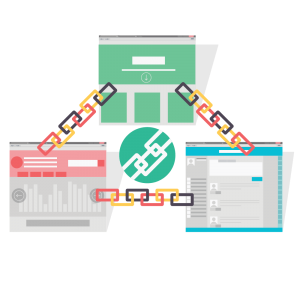 One of the most important aspects of SEO is link building. Quality links are one of the main factors that Google uses to determine a website’s authority and trustworthiness.
One of the most important aspects of SEO is link building. Quality links are one of the main factors that Google uses to determine a website’s authority and trustworthiness.
A high-quality link is a link from another website that is relevant to your website, has a high domain authority, and isn’t spammy or artificial.
There are several ways you can go about acquiring high-quality links:
- Guest blogging
- Broken link building
- Resource pages
- Create linkable assets
URL structure
Your website’s URL structure can also have an impact on its SEO. A well-structured URL is easy for humans and search engines to understand, and it can help improve your website’s rankings.
Some things you can do to optimise your website’s URLs include:
- Keep them short and simple
- Include the keyword in the URL
- Make sure they are crawlable and indexable
- Use a clean and readable URL structure that follows your website’s hierarchy
Image optimisation
Images can also help improve your website’s SEO. When used correctly, images can increase the time users spend on your website, help with branding, and even improve your website’s rankings.
However, if not optimised correctly, images can slow down your page loading times and hurt your SEO.
- Some things you can do to optimise your website’s images include:
- Compressing them
- Optimising their file names
- Including keywords in the image alt text
- Loading them from a CDN
Schema markup
Schema markup can help improve your website’s SEO. Schema is HTML or JavaScript code that you can use to mark up different types of information on a web page, including contact details, events, or reviews.
Use schema when it makes sense for the content on your webpage: if particular pieces of information would be helpful for Google and other search engines to recognise, then using this coding will make sure they do.
Https
Google has been giving increasing weight to websites that are served over https, so it’s important to make the switch if you haven’t done so already.
https is a secure protocol that encrypts data sent between a user’s browser and your website. This helps protect users from being tracked or having their information stolen.
It also helps improve your website’s SEO, as Google takes into account factors such as security and trust when determining rankings.
There are several things you can do to switch your website over to Https, including:
- Getting an SSL certificate
- Adding https to your website
- 301 redirecting traffic from http to https
Internal linking
Good internal linking helps improve a website’s usability, and it can also help with rankings.
When you link to other pages on your website from within your content, you are passing along some of your website’s authority to those pages. This can help them rank better in search engine results pages.
You should also use anchor text when linking to other pages – this is the text that users will click on to be taken to that page. Anchor text should be keyword-rich and relevant to the page you are linking to.
Mobile-friendliness
 With more and more people using their mobile devices to access the internet, your website must be optimised for mobile.
With more and more people using their mobile devices to access the internet, your website must be optimised for mobile.
Google now uses mobile-friendliness as a ranking factor, so if your website isn’t optimised for mobiles, you could be losing out on traffic.
There are several things you can do to make your website more mobile-friendly, including:
- Using a responsive design
- Optimising images for smaller screens
- Making sure font sizes are large enough to read comfortably on a phone or tablet
Conversion rate optimisation (CRO)
The main purpose of CRO is increasing conversions: getting more people to sign up for newsletters, making purchases, or whatever action you want them to take.
Tips for improving your conversion rate include:
A/B testing different versions of a landing page (for example, one version with an image versus another version without)
Conducting user research interviews so you can find out what’s working well and where there are opportunities for improvement
Optimise content so each piece helps move visitors towards their desired goal – such as signing up for a newsletter or purchasing something online. This will make sure they don’t bounce off the page or get distracted.
XML Sitemaps
An XML sitemap is a file that tells Google and other search engines about the pages on your website.
It includes information such as the page’s title, description, URL, and last updated date. This helps search engines crawl your website more effectively, which can improve your website’s SEO.
You can create an XML sitemap using various tools, including:
Content formatting
You want to use formatting to help break up your content and make it more visually appealing while being optimised.
Here are some strategies for taking advantage of formatting.:
- Use headings and subheadings to organise your article
- Include images, graphs, and charts whenever possible
- Make use of lists
- Highlight quotes from other sources
- Use bold or italics sparingly to emphasise key points
When you format your content in a visually appealing way, it becomes easier for readers to digest the information you’re providing. Formatting can also help improve click-through rates from SERPs, as well as social shares.
There are a variety of HTML formatting tags that you can use:
- Headings (H1, H2, H3, H4, H5, and H6, with H1 being the most important)
- Blockquotes
- Tables
- Lists
SEO Best Practises FAQ
How do you find the right keywords for your business?
There are many different ways to find keywords for your business. One popular method is using Google AdWords Keyword Planner, which allows you to see how many people are searching for a particular term each month.
You can also use competitor research tools like SEMrush and ahrefs to get an idea of what terms your competitors are targeting.
What are the most important elements of on-page SEO?
Onpage SEO includes factors like your title tag, meta description, header tags, and internal linking. All of these elements help communicate to search engines what your page is about.
What’s the best way to format my content for SEO?
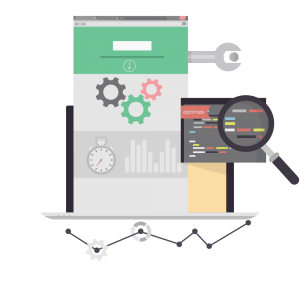 There is no one-size-fits-all answer for this question, as the best way to format your content will vary depending on your industry and what you’re trying to achieve. However, some formatting tips include using headings and subheadings to organise your article, including images and graphs, making use of lists, and highlighting quotes from other sources.
There is no one-size-fits-all answer for this question, as the best way to format your content will vary depending on your industry and what you’re trying to achieve. However, some formatting tips include using headings and subheadings to organise your article, including images and graphs, making use of lists, and highlighting quotes from other sources.
How often should you update your XML sitemap?
It’s a good idea to create and submit an XML sitemap whenever you publish new content on the site, but it’s up to you when (or how often) to submit the file. Some tools and plugins allow you to automatically update this file for you, or you can do it manually when you’re ready.
What is the difference between commercial and informational search intent?
Commercial search intent is when a person is looking to purchase a product or service. Informational search intent, on the other hand, is when someone is looking for information about a particular topic.
How can you determine a user’s search intent?
You can get find a users search intent by searching Google with your target keywords and see what type of pages are listed on the front page. If articles are listed, the search intent is information. If eCommerce stores are listed, the search intent is transactional.
How to see the Page speed of my website?
There are many tools to check the page speed of your website. Google Page Speed Insights is an easy and free way to test a URL and see how it scores on mobile and desktop.
What is crawl budget?
Crawl budget is the number of times a search engine’s web crawler will visit your website in a given amount of time. This number is based on how many pages you have and how much content there is to index from those pages, which means it can vary greatly depending on the size and structure of your site.
How often should I update my XML sitemap?
It’s a good idea to create and submit an XML sitemap whenever you publish new content on the site, but it’s up to you when (or how often) to submit the file. Some tools and plugins allow you to automatically update this file for you, or you can do it manually when you’re ready.
What is the best way to build quality links?
There are many ways to build quality links, but the best method will vary depending on your business and industry. In most cases, it’s a good idea to write useful content that is valuable for users and earn backlinks over time as you develop relationships with other sites in your niche.
How does schema markup improve page rankings?
Schema markup is code that you can add to your website’s HTML which helps search engines understand the content on your pages. When used correctly, schema markup can help improve page rankings and click-through rates.
What are some common SEO mistakes?
Some of the most common SEO mistakes include not using keywords in titles and meta descriptions, not having internal linking, and missing out on quality link-building opportunities.
We Offer SEO Services Nationwide
- Chester:https://mediakynect.co.uk/seo-chester/
- Wirral: https://mediakynect.co.uk/seo-wirral/
- Liverpool: https://mediakynect.co.uk/seo-liverpool/
- London: https://mediakynect.co.uk/seo-london/
- Kent: https://mediakynect.co.uk/seo-kent/
- Wrexham: https://mediakynect.co.uk/seo-wrexham/
Conclusion
If you want to make sure your website is performing at its best, following these SEO best practices will help. Contact us if you need any assistance with implementing the tips outlined in this blog post. We’ll be happy to provide advice or answer questions about what’s working well for other customers.
